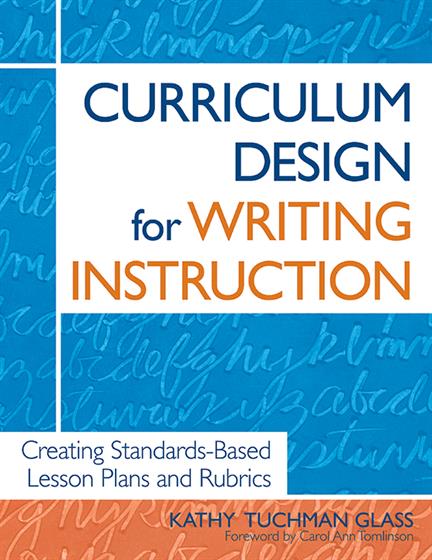
Hands-on, Practical Guidance for Educators
From math,
literacy, equity, multilingual learners, and SEL, to assessment, school counseling,
and education leadership, our books are research-based and authored by experts
on topics most relevant to what educators are facing today.
Curriculum Design for Writing Instruction
Creating Standards-Based Lesson Plans and Rubrics
Foreword by Carol Ann Tomlinson
Design innovative and engaging lessons and units that produce measurable gains!
This clever resource takes the reader step-by-step through the curriculum design process: from identifying national and local standards and translating them into user-friendly language to crafting meaningful writing assignments and assessments that reveal student strengths and weaknesses. Rooted in the six-traits model of instruction and assessment, Glass's four-part process shows teachers how to:
This clever resource takes the reader step-by-step through the curriculum design process: from identifying national and local standards and translating them into user-friendly language to crafting meaningful writing assignments and assessments that reveal student strengths and weaknesses. Rooted in the six-traits model of instruction and assessment, Glass's four-part process shows teachers how to:
- Identify grade-level content standards for writing
- Create a teacher rubric with a clear set of criteria for writing assessment
- Craft a student checklist that guides students through the unit and prepares them for teacher expectations
- Design lessons that help students achieve success
Product Details
- Grade Level: PreK-12
- ISBN: 9781412904568
- Published By: Corwin
- Year: 2004
- Page Count: 264
- Publication date: April 06, 2014
Price: $45.95
For Instructors
When you select 'request review copy', you will be redirected to Sage Publishing (our parent site) to process your request.



